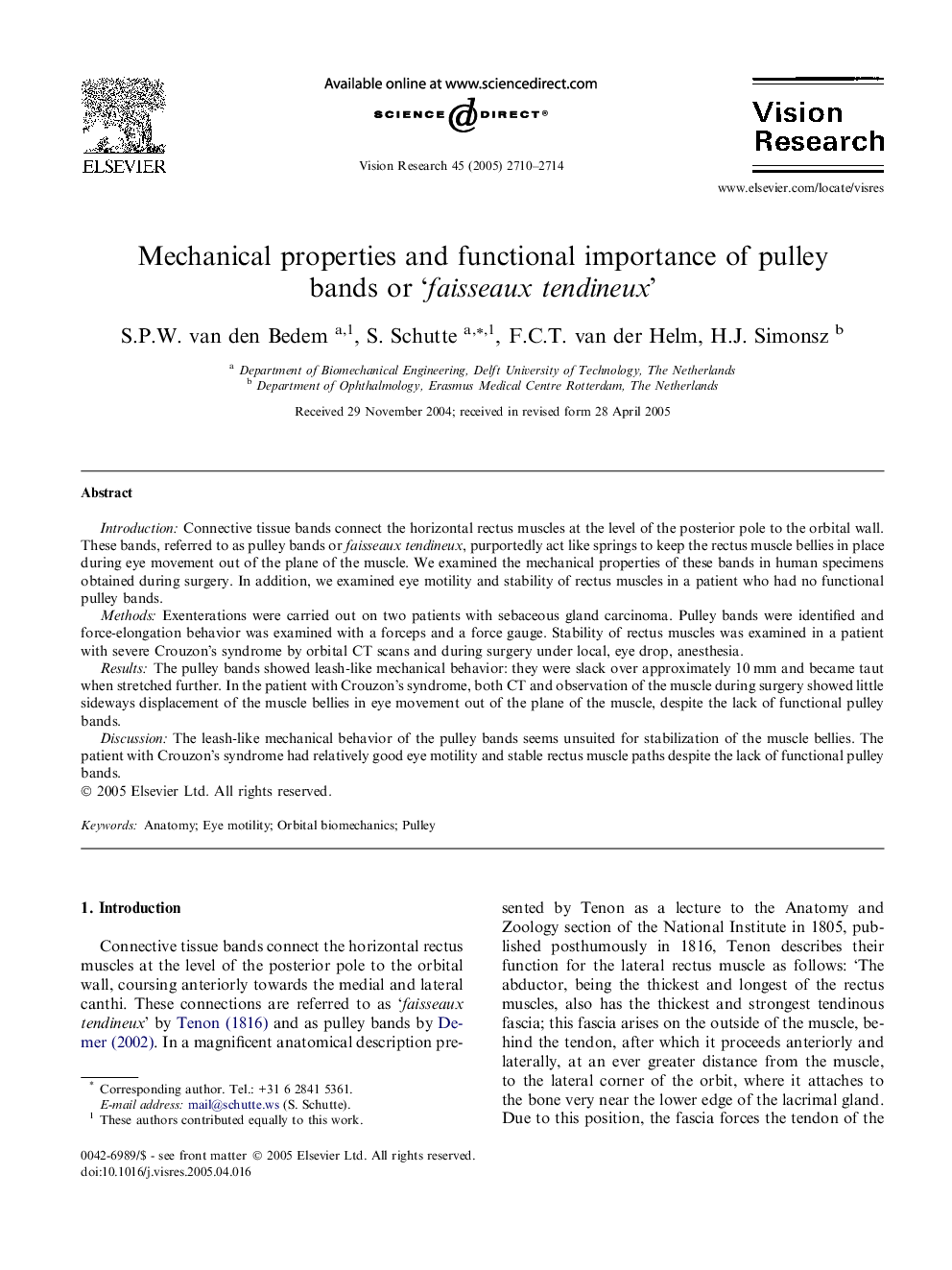| Article ID | Journal | Published Year | Pages | File Type |
|---|---|---|---|---|
| 4036069 | Vision Research | 2005 | 5 Pages |
IntroductionConnective tissue bands connect the horizontal rectus muscles at the level of the posterior pole to the orbital wall. These bands, referred to as pulley bands or faisseaux tendineux, purportedly act like springs to keep the rectus muscle bellies in place during eye movement out of the plane of the muscle. We examined the mechanical properties of these bands in human specimens obtained during surgery. In addition, we examined eye motility and stability of rectus muscles in a patient who had no functional pulley bands.MethodsExenterations were carried out on two patients with sebaceous gland carcinoma. Pulley bands were identified and force-elongation behavior was examined with a forceps and a force gauge. Stability of rectus muscles was examined in a patient with severe Crouzon’s syndrome by orbital CT scans and during surgery under local, eye drop, anesthesia.ResultsThe pulley bands showed leash-like mechanical behavior: they were slack over approximately 10 mm and became taut when stretched further. In the patient with Crouzon’s syndrome, both CT and observation of the muscle during surgery showed little sideways displacement of the muscle bellies in eye movement out of the plane of the muscle, despite the lack of functional pulley bands.DiscussionThe leash-like mechanical behavior of the pulley bands seems unsuited for stabilization of the muscle bellies. The patient with Crouzon’s syndrome had relatively good eye motility and stable rectus muscle paths despite the lack of functional pulley bands.
